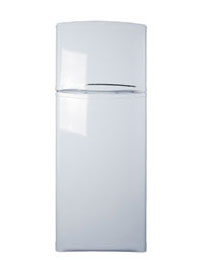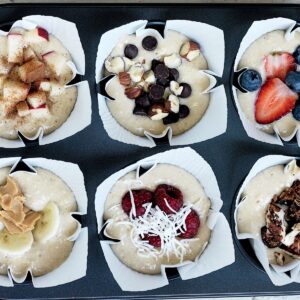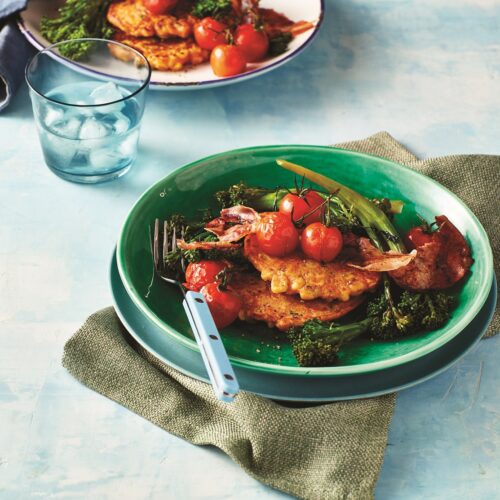
Caroline Gunn gives practical advice on how to get the best from your freezer.
Ever since humans were hunters and gatherers, we’ve been freezing food. In those days ice and snow were used to keep foods cold and frozen. The introduction of frozen storage cabinets in the 1880s, and frozen foods to America in the 1930s (by Clarence Birdseye) marked the start of the commercial freezing industry. Here in NZ, freezing was crucial in helping shape our economy early last century as we began to export frozen meat to Britain. Suddenly all types of food were available all-year-round and a new eating revolution had begun.
Today, freezing is still the most popular method of food preservation; it’s convenient and practical in our everyday lives. There is, however, still a perception that frozen foods are not as healthy or as fresh, and their quality is not as good.
Does freezing affect food quality?
Freezing involves changing the water content in a food from a liquid to a solid (ice). When water freezes it expands, and ice crystals form. If freezing and thawing is done properly, foods will retain their colour, texture, nutrition and flavour. Freezing slows down the processes that normally cause food to deteriorate and go off; in other words, it holds the lifespan of the food in suspension. Julie Dick, nutritionist for Heinz-Wattie’s, says most frozen vegetables have been harvested and processed within 12 hours. She says this particular rapid freezing means the nutrients are locked in.
Are frozen foods a healthy choice?
Sometimes people wonder: if fresh produce isn’t handy, is frozen a healthy alternative? It is fair to say that frozen will never compare to ‘fresh that day’ out of a well-composted garden for flavour, vitamin and mineral content. But if you don’t have access to a vegetable garden, your next choice may well be the supermarket. Since supermarket ‘fresh’ vegetables may have travelled significant distances before reaching their destination and we often store vegetables for several days before eating them, the nutritional content can be reduced. So the water-soluble vitamin content of frozen vegetables can be comparable or greater than fresh vegetables, especially if it has been over 5-7 days since they were harvested. Vegetables are a healthy option whether you eat fresh or frozen; the most important thing is that you actually eat them! Choose what best suits your lifestyle.
If you choose frozen vegetables, here’s how to get the best nutritional value from them:
- Do not boil; cook in a container in the microwave on high for 2 minutes.
- Do not add any extra water (there is sufficient already in the vegetables) for cooking in the microwave.
- If using in a stir-fry, add frozen vegetables 2 minutes before serving – you just want to heat them through.
Methods of freezing
Foods can be frozen two ways: slowly or quickly. Slow freezing is what we do when we freeze foods at home. The desired temperature (-18°C) is achieved within 3-72 hours.
Quick freezing is when the temperature of food is lowered to -18°C or below within 30 minutes to 3 hours. It usually involves the use of blasts of frigid air blown across the food. This method is used in the food processing industry to freeze foods as quickly as possible after harvest and transporting to the factory. The benefit of rapid freezing is that small ice crystals form. These cause less damage to cell walls than the larger ice crystals formed during slow freezing. Larger ice crystals may cause food to go quite soft and mushy once thawed and heated.
How to get the best results when freezing
If you plan to freeze quantities of fruit and vegetables – for example when they’re in season and cheap – here are some guidelines to getting the best results.
All fruit and vegetables need washing, blanching and packaging before freezing. Avoid bruised foods.
Foods unsuitable for freezing
- Cabbage, celery, cress, cucumbers, endives, lettuce and parsley
- Cheese or crumb toppings
- Cream or custard fillings, milk sauces, sour cream
- Cooked egg whites, icings made from egg whites
- Fried foods
- Fruit jelly, gelatine
Blanching
immerse the fruit or vegetables in hot water for 1-4 minutes (depending on the type; firmer fruits and vegetables will take longer than soft ones). See blanching times below.
This inactivates the enzymes that would cause deterioration during freezer storage. Blanching also enhances and fixes the green colour of vegetables. Once blanched, vegetables should be rapidly cooled in iced water to prevent further cooking. Over-blanching results in cooked food and loss of flavour, colour and nutrients. Under-blanching stimulates enzyme activity and is worse than no blanching at all.
Blanching times: Broccoli 4 minutes, cauliflower 3 minutes, carrot slices 2 minutes, peas 1 1/2 minutes, beans (green sliced) 2 minutes.
How to prevent browning
Some fruit can be treated with ascorbic acid (vitamin C) to control the enzyme activity that causes browning. This is ideal for freezing apples, apricots, feijoas, fruit salad and bananas (if they are peeled and sliced).
Ascorbic acid can be obtained from the chemist or some supermarkets. Add 1-1/4 teaspoons ascorbic acid to a litre of water. Dip the fruit in this solution and pack for freezing straight away. Alternatively, you can dissolve 1 teaspoon ascorbic acid in 1/2 cup of water. Using 1 tablespoon of this solution for each 500ml of fruit: sprinkle the ascorbic acid solution over the fruit; or if the fruit is in syrup, mix the solution into the syrup.
Lemon juice in water or a citric acid solution works well to prevent short-term browning, but ascorbic acid is the most effective for freezing fruit.
Handy hints for packing
Packaging must protect the flavour, colour, moisture content and nutritive value of the food from the drying effects of the freezer.
- Do not freeze foods in large containers. It will take too long to freeze and result in a poor quality product.
- Never freeze fruit or vegetables in a container larger than 2.5 litres.
- Always use freezer-proof bags and freezer wrap. If it doesn’t state suitable for the freezer, assume it isn’t.
- Use rigid containers with tight fitting lids. Keep the sealing edge free of food to ensure good closure.
- Don’t use wax paper, paper cartons or cottage cheese cartons.
- When food is packed in bags, press out all air. Press firmly and seal by twisting and folding back the top part of the bag. Secure with a good quality twist tie.
- Use freezer tape or self-adhesive labels and marker pens to label clearly. State the date, name and number of servings.
- Label commercially frozen foods with a storage date.
Tips for home freezing
- For best results and to avoid large ice crystals developing, freeze foods as soon as you have packaged them.
- Do not overload your freezer with unfrozen food as this will result in long, slow freezing and a poorer quality product.
- Place the packaged food in the coldest part of the freezer with space between so air can circulate freely. When the packets have frozen, they can be restacked closer together.
Food safety and freezing
When bacteria and other ‘spoilage organisms’ are frozen they tend to stop reproducing and some will die off rapidly at freezer temperatures. Surprisingly, more are destroyed at temperatures just below freezing point, i.e. -2 to -4°C than at lower temperatures -15 to -18°C. Nevertheless, don’t think of freezing as a way of destroying food-borne micro-organisms because some will survive. Food poisoning toxins appear unaffected by low temperatures so could be present in soups or stews that have been frozen in large quantities. We have to assume defrosted food may still contain harmful bacteria, which is why reheating thoroughly is really important.
Defrosting tips
Perishable foods like meat, poultry, fish or dairy need thawing in the refrigerator (not out on the bench top).
Precooked foods low in moisture like bread, cakes and other baked goods can be thawed out on the bench at room temperature.
For quick defrosting when time is at a premium, defrost in the microwave allowing 12-15 minutes per kilo of meat. Always remove the store wrapping or foam tray first as they may release chemicals into the food.
Alternatively, place packages in a watertight, sealed bag and cover with cold water. Change water every 30 minutes until food is completely thawed.
When can you refreeze?
If food is thawed in the refrigerator, it is safe to refreeze without cooking. However, if it has been thawed out on the bench, or in the microwave or by running cold water over it, then it needs to be cooked before refreezing. Most manufacturers advise against the refreezing of foods once thawed. This is primarily because of the detrimental affect on texture, flavour and nutritional qualities. But it’s also because foods that have been thawed from frozen spoil faster than similar fresh products. Refreezing can be done safely but nutritional quality is lost along with flavour and texture.
Getting the most out of your freezer
A full freezer is the most energy efficient. Keep a list of what’s in your freezer and ensure it is up-to-date. This can help you plan meals and remind you of old packages of food within their recommended storage times. Keep the list handy so food can be added and taken off as used.
How long will food remain frozen if the power goes off?
Food in a loaded freezer will stay frozen for 2-4 days, depending on the size of the freezer. A half-filled freezer will keep food frozen only about 24 hours. If it’s a chest freezer, cover the freezer with blankets (keep away from compressor) to trap the cold underneath.
Use-by dates
Frozen foods should not be kept indefinitely if you want to enjoy the same flavour and texture as you would with a fresh food. Most frozen foods are assigned a freezer life. This is based on texture, flavour, tenderness, colour and nutritional quality upon thawing and subsequent cooking.
Here is a guide on freezer life for various foods:
- Fruits: 12 months
- Vegetables: 8-12 months
- Beef: 8 -12 months
- Poultry: 6-12 months
Sliced or cured foods like bacon or ham and other foods with large amounts of fat lose quality more rapidly.
Food frozen for longer than the recommended freezer life will still be safe to eat but will not be at its optimum.
Freezing and flavour
Foods tend to intensify in flavour in the freezer. If you’re freezing cooked dishes, it is best to minimise added spices and herbs for long storage. Ideally season food only lightly before freezing, adding more after thawing and reheating.
- Synthetic vanilla becomes very strong, so use vanilla pods if possible.
- Pepper, cloves, celery seasoning and garlic also increase in strength and become bitter with freezing.
- Curry can develop a musty off-flavour and salt will lose flavour.
Freezer burn
If food is not wrapped properly during freezer storage it may suffer freezer burn. This is a browning of light-coloured foods such as chicken meat. The browning results from the loss of moisture at the surface, leaving the food more porous. Freezer burn is not harmful but does cause off flavours and toughens the food. It is irreversible and is most commonly associated with poultry, meats and fish both raw and cooked. It can also affect some fruits.
www.healthyfood.com










